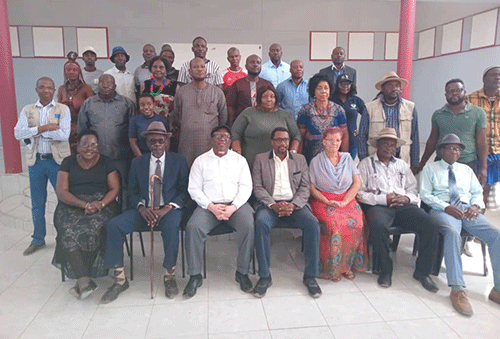Uakutura Kambaekua
OPUWO – Farmers in the Kunene region have called for the zoning of Kunene North, saying the area has been free of Foot and Mouth Disease (FMD) for the past 50 years.
The farmers suggested that dividing the red line districts into portions would aid the government’s efforts to eradicate FMD and other diseases, maintaining that the fence deprives them of the lucrative meat market southerners enjoy.
These sentiments were expressed by Ben Kapi, vice president of the Ngatuuane Farmers Union, during an oversight visit and consultative meeting with stakeholders in the Kunene region, which was arranged by the Parliamentary Standing Committee on Economics and Administration on Monday in Opuwo.
Kapi, on behalf of the farmers, urged all parties concerned to devise long-term solutions, including effective animal disease management methods, before demolishing the fence, asserting that Kunene should be designated independently, considering it is free of FMD.
He stated that while the red line, or veterinary cordon fence, was erected per international animal health regulations to prevent the spread of diseases, it should be dismantled to safeguard the meat sector, and increase sales north of the red line.
“The red line residents have been treated unfairly, compared to other farmers. What we want is the same treatment for us to also enjoy the market,” he said.
Farmers gave the government several options to boost the meat market within the redline, including the quarantining of animals before sales, fencing and zoning of disease-prone areas, such as the Zambezi, Kavango East and West regions.
In response, Natangwe Ithete, head of the committee, stated that the government’s goal is to eliminate the red line.
“We also want this fence to go, and it will go. However, if we decide now to remove the fence, our meat sales might be affected, as our buyers might be affected as per the international standards with regards to livestock health. B what I can promise is that the fence will go,” he stated.
The red line separates northern Namibia from the central and southern parts of the country, and it envelopes several northern regions, including Oshana, Kavango East, Omusati, Zambezi, Omaheke, Kunene and parts of the Oshikoto region.
Not politicking
Ithete also used the gathering to reiterate his long-held stance that the red line must fall.
This, he said, is to ensure farmers north of the barrier have equitable access to a viable livestock market.
Ithete hastened to say his remarks should not be misconstrued politically, as it is the collective view of all members of parliament.
“We all have the same pain, and I can guarantee you that under my leadership, my committee is going to motivate and persuade Parliament to accept your proposal, and make sure that this red line is gone.”
He said they do not know when the fence will be removed, but they are expecting a decision on the red line following their consultations.
“In our report, we are to mobilise all the members of parliament to vote for the fence to go,” he said.
The engagements are scheduled for the Northern Communal Areas (NCAs) of Omusati, Oshana, Ohangwena and Oshikoto from 12-18 May 2024.
These were prompted by a petition filed by a civic organisation, Lisha Empowerment and Development, in 2022, which called for the urgent revival of the livestock market in NCAs.
Ithete said the red line has been affecting farmers for far too long, and discussions around the matter have not yielded any positive results in the past 30 years.
Joseph Jantze, a farmer north of the red line, had similar comments, suggesting that if the government is serious about resolving the red line challenges, it should begin by progressively moving the barrier around 50 kilometres every 10 years.
He was of the opinion that the talks will continue for the next 30 years, which will impact the meat sector and deprive it of a profitable market. -Nampa


